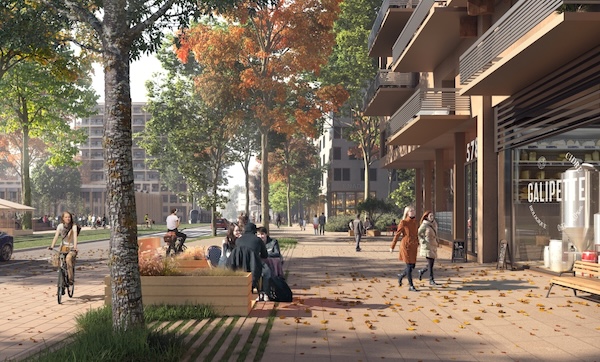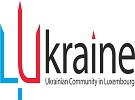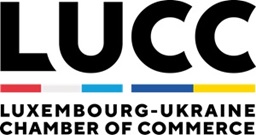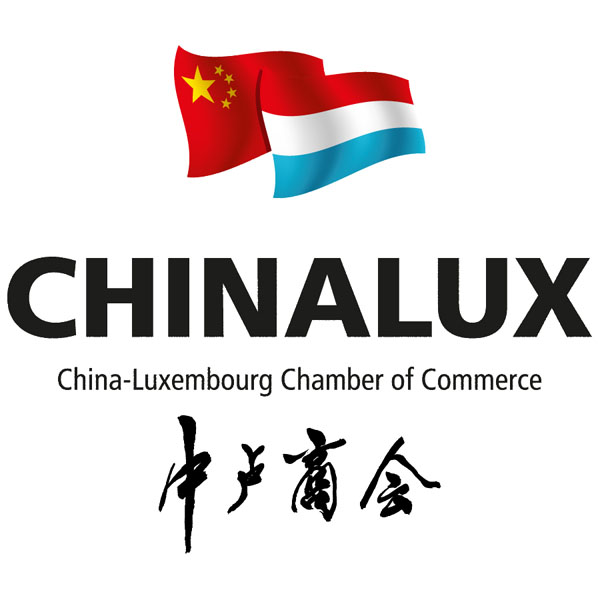 View of the future avenue which will cross the Kuebebierg district;
Credit: Güller + Güller Architecture Urbanism
View of the future avenue which will cross the Kuebebierg district;
Credit: Güller + Güller Architecture Urbanism
On Wednesday 22 October 2025, Fonds Kirchberg announced they had signed an “unprecedented contract” for the establishment of a decarbonised heating network for the Kuebebierg district.
According to Fonds Kirchberg, the decarbonised heating network is the result of negotiations between the Fonds Kirchberg and the consortium “KCH” – an association of industry professionals bringing together KARNO, C-Energy, Hydrogaz, Verbraeken and Litran – within the framework of a European competitive tender procedure.
Once completed, the low-temperature network will supply heating and domestic hot water for the future Kuebebierg district, using advanced decentralised geothermal technology combined with aerothermal energy (heat pumps) and hybrid solar production (thermal and photovoltaic).
Fonds Kirchberg noted that the system fully aligns with Luxembourg’s and the European Union’s ambitions for carbon neutrality by 2050 and said: “The signing of this contract marks a decisive milestone in the sustainable and forward-looking development of the Kirchberg plateau, embodying the Fonds Kirchberg’s innovative vision for the urban planning of tomorrow.”
The future Kuebebierg district will cover 33 hectares and will accommodate more than 3,000 homes, as well as public facilities and areas dedicated to economic activities. Designed to promote biodiversity conservation, the project integrates nature into the urban environment, in keeping with the district’s motto: “So urban, so natural.”
The site already hosts the Kuebefarm, an urban farm surrounded by wide meadows ideal for relaxation and outdoor leisure, including a landscaped playground.
From an energy perspective, the Kuebebierg project relies on a combination of renewable technologies, precise modelling of energy requirements and a low-temperature heating network. Over 460,000 m² of built surface area will be connected to this network, with the first phase of pipeline installation imminent. The network rollout will continue until 2035.
“This network has been designed specifically for Kuebebierg,” stated Marc Widong, Director of the Fonds Kirchberg. “It is a pioneering project for Luxembourg, incorporating a comprehensive approach covering every stage of the infrastructure – from design to operation and maintenance. By sustainably harnessing natural resources, the Fonds Kirchberg is committed to providing an optimal quality of life for the future residents of the district.”
According to Fonds Kirchberg, the district’s energy system will be based on an innovative combination of 21 decentralised and autonomous geothermal hubs, supported by an aerothermal plant, all connected through a low-temperature network. The modular, flexible and interconnected system will supply heat for heating and domestic hot water, as well as cooling during the warmer months through “geocooling”, while simultaneously regenerating the geothermal probes.
Moreover, hybrid solar panels (thermal and photovoltaic) will complement the system by recharging the subsoil, ensuring balanced, long-term operation. Thanks to the on-site solar panels, most of the electricity is produced locally, providing a high level of energy autonomy. With a capacity of 6 MW supplied by the aerothermal plant and another 6 MW from the 21 decentralised hubs, Fonds Kirchberg highlighted that the circular architecture embodies carbon neutrality, combining performance, energy efficiency and comfort throughout the year and that this approach offered the potential to reduce heating costs for future residents – particularly important given that 30% of the housing units in the district will be affordable.








